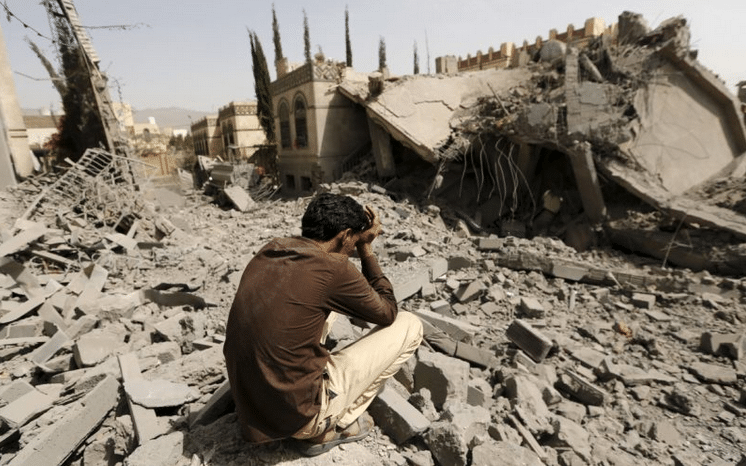
Yemen, a country spread across the base of the Arabian peninsula, was described by the Romans as “Arabia Felix” – happy, fortunate Arabia – an epithet that would certainly not apply in more modern times. Its recent history has been convoluted and bloody. The latest episode came on April 26, 2020, when the STC (the Southern Transitional Council) declared that south Yemen would break away from the national government and henceforth rule itself.
This unilateral declaration did not come out of the blue. Back in 1967, just after the British departed from Aden and its South Arabia protectorate, South Yemen became an independent communist state backed by the USSR. It was only in 1990, with the imminent collapse of the Soviet Union and after years of military and political in-fighting, that South Yemen agreed to unite with the north to form the Unified Republic of Yemen.
The glue binding the two quickly became unstuck. It took only four years for the south to try to break away again. A short civil war ended with the south being overrun by northern troops and the national government back firmly in control.
Now comes the latest bid to restore an independent South Yemen. Perhaps the instigators calculated that the current state of utter chaos within the country provided them with a golden opportunity. For more than a decade Yemen has been at war with itself, the two main parties backed by outside forces. The results reduced the country to what has been termed “the world’s worst humanitarian disaster.” Disease and starvation decimated the population.
It all started in the sadly misnamed “Arab spring” uprisings of 2011. Inside Yemen mass protests, a near-assassination of the then president, Ali Abdullah Saleh, and pressure from neighbouring states forced Saleh to step down in favour of his vice-president, Abed Rabbo Mansour Hadi. Hadi sponsored a draft constitution in 2015 proposing a federal system split between northerners and southerners, but the Iran-backed Houthi rebels rejected it.
The Houthis are a fundamentalist Shia group supported by Iran, but Saleh, although a Sunni Muslim, seemed intent on manoeuvering a return to power in collaboration with them. It was through Saleh that the Houthis were able to gain control of most of the Yemeni military, including its air force. As a result, and supported with military hardware from Iran’s Revolutionary Guards, they overran large tracts of the country, including the capital city, Sana’a.
Saudi Arabia, determined to prevent Iran from consolidating a strong presence in the Arabian peninsula, intervened in March 2015 to beat back the Houthis. The fighting has continued ever since, with neither party able to gain a clear advantage. The efforts of the UN special envoy to Yemen, Martin Griffiths, have so far proved largely ineffective.
To the mass misery caused so far to the population must now be added the deadly coronavirus (the first case was reported on April 10), and the danger, in the absence of effective central government control, of its rapid spread.
This is the moment chosen by the STC to strike at the concept of a united Yemen. On April 26 it declared a state of emergency and announced self-rule for regions under its control, including Aden which it seized from government forces in August 2019 and has been holding ever since. Actual fighting in the Aden region stopped last November, following an agreement signed in the Saudi capital, Riyadh.
So far the STC coup cannot be counted a great success.
The Saudi-led military coalition – including the United Arab Emirates, once firm supporters of the STC – immediately rejected the group’s declaration of self-rule in the south, demanding “an end to escalatory actions” and return to a peace deal signed in November last year. Meanwhile Saudi began a unilateral ceasefire with the Houthis that it said would continue throughout the Muslim fasting month of Ramadan.
The United Nations also would have no truck with the STC’s demands. It called for a ceasefire, referring to the effect of torrential rains and flash floods that hit the country in March, “Countless families have lost everything,” said Lise Grande, the UN’s Huianitarian Coordinator for Yemen. “This tragedy comes on top of the COVID-19 crisis, which comes on top of the famine last year, which came on top of the worst cholera outbreak in modern history. The solution is clear. The parties to the conflict need to find the courage to stop fighting and start negotiating.”
But, much to the disappointment – perhaps even dismay – of the STC, within hours of its declaration no less than five of the eight southern Yemeni governorates refused to endorse it, confirming their adherence and loyalty to Yemeni President Hadi.
Moreover the attempt by the separatists to take over the Yemeni island of Socotra was thwarted by government forces, which foiled an attempt by armed units of the STC to take over the capital, Hadibo. Socotra’s governor, Ramzi Mahrous, was another of south Yemen’s leaders refusing to back the STC. He announced on national television that his forces had confronted the separatist militia and “managed to stop their advance”.
And so Yemen staggers on, much of its people subsisting in abject poverty and misery – the victims both of natural disasters such as unprecedented floods and coronavirus, and the man-made calamity of civil war. It is difficult to see where an impetus to break the political impasse might come from.

